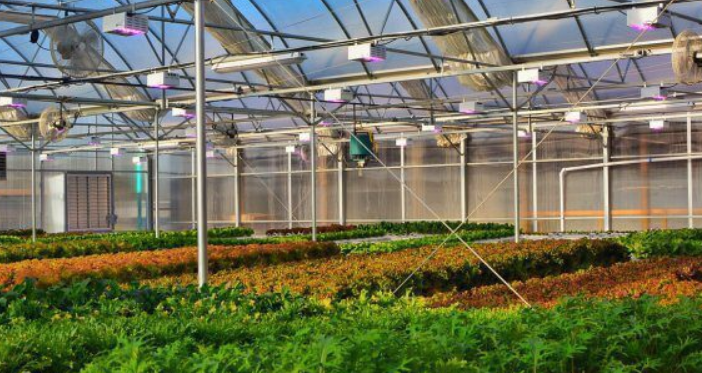Greenhouses play a key role in boosting productivity for growers, which makes creating the right internal environment absolutely essential. Proper lighting, accurate energy calculations for heating and cooling, choosing the most efficient climate systems, and ensuring safe design are all crucial for successful greenhouse operations. When these elements are in balance, high performance and efficiency follow. This guide blends scientific insights with hands-on experience to help you achieve sustainable, cost-effective results.
Providing Proper Greenhouse Lighting
The quality of greenhouse lighting is one of the key factors in plant growth. Natural solar sources mainly provide light, but in low-light regions or shorter seasons with less sunlight, the use of artificial LED lighting with red and blue spectra is highly effective. Additionally, using diffused light coverings enhances photosynthesis quality, while shading systems that control radiation can keep temperatures at optimal levels. Providing proper greenhouse lighting is not easy and requires specialized knowledge.
Calculating Greenhouse Heating and Cooling Energy
Accurate calculation of the energy required to control the internal greenhouse temperature is a fundamental step in designing heating and cooling systems. The principles include determining the necessary air exchange (CFM) and heating demand (BTU) based on the difference between internal and external temperatures, the greenhouse’s surface area or volume, and the type of covering.
CFM: for proper ventilation (replacement air)
BTU: for choosing a suitable heater (including IR or oil-based heaters)
Our article “Calculating Greenhouse Heating and Cooling Energy” provides a complete discussion on how to perform these calculations.
The Best Greenhouse Cooling Systems
Choosing the right cooling system for a greenhouse isn’t always a one-size-fits-all decision. The ideal solution depends on factors like the internal setup of the greenhouse and its geographic location. That said, here are some of the most effective ways to manage excess heat—especially during the summer months or in warmer regions:
Natural ventilation and exhaust fans: These help circulate air by pushing out hot indoor air and bringing in cooler air from outside.
Pad and Fan systems (evaporative cooling): Especially efficient in dry climates, these systems use minimal energy while providing excellent cooling performance.
Shade nets and light-diffusing covers: These reduce the amount of direct sunlight entering the greenhouse, helping to keep temperatures under control during hot seasons.
Suitable Greenhouse Heating Systems
In the cold season, selecting the right heating system is crucial:
- Passive solar heating using sunlight and thermal storage materials such as water or stone
- IR radiant heaters that transfer heat directly to plants and objects, reducing energy use
- Underfloor heating with thermal piping beneath the soil, creating a uniform temperature distribution
- Smart temperature control with thermostats and sensors that automatically regulate heating and cooling systems
Final Conclusion
By selecting the right heating system—such as solar or IR heating—combining it with natural or evaporative cooling methods, and ensuring standard lighting, you can create a stable, low-cost, and reliable environment for your greenhouse. The use of smart technologies and precise energy calculations guarantees optimized consumption and increased efficiency. If you need greenhouse plastic for your project, please contact our colleagues at Keyhan Plastic.

